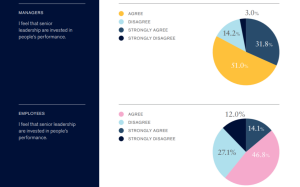
I doubt that I need to convince an online retailer that product recommendations should be a critical component of their e-commerce strategy. We see time and again that they improve product discovery, lead to increased conversions and order values, and provide more personalized experiences for shoppers.
Today, recommendations are considered a general best practice for retailers rather than a competitive advantage, but there are many ways to improve the effectiveness of your recommendations to give you a competitive advantage. The most relevant recommendations consider behavior and intent at the individual level, factoring in that individual’s browsing patterns, online and in-store purchase history, aggregate site trends, and a host of other attributes.
We’ll see more and more of this type of hyper-individualized recommendations in the future. To help you get ahead of the curve, we’ve compiled the 10 rules that will determine successful product recommendations going forward.
1. Use the best data possible
This sounds obvious, because you never want to use less than the best of anything. But many retailers are not using the best data to inform the products they recommend. If you’re only tracking clicks to “determine” visitors’ interests, you’re missing valuable opportunities to uncover your shoppers’ true affinities and intent at the product, category, brand, and price-range level. More revealing analytics such as active time on a page, mouse movement, scrolling, etc. are needed for that.
2. Make recommendations individually relevant
Every one of your shoppers is different, of course, with unique preferences and affinities. I may prefer the Nike brand, black boots, and lower prices while you prefer Adidas, brown boots, and luxury products. Retailers that can incorporate all of these individual preferences into every recommendation will be better positioned to catch each shopper’s attention.
3. Deliver recommendations in real time
It’s not enough to know each shopper’s general preferences, you need to understand each shopper’s intention or goal for each shopping trip — because what I’m shopping for on your website this time doesn’t necessarily determine what I’ll be shopping for next time. Recommendations need to be able to pivot quickly to incorporate new data in real time to ensure that they’re relevant now, not the next time I shop on the site.
4. Leverage your product catalog without a feed
Even if your recommendations are spot-on every time for every shopper, they’ll still result in a poor shopping experience if they suggest products that are not in stock. Many retailers integrate their product catalogs with their recommendation engines via an API, but these integrations are cumbersome and typically only allow for updates once per day. If any product sells out in that timeframe, you could be frustrating your shoppers by recommending items they can’t buy.
5. Manage recommendation strategies on your own
You know your business better than anyone, so you know which variables are most important to incorporate into your recommendations. Many retailers rely on recommendation engines that are effectively black boxes — they don’t allow you to build the algorithms that will work best for your organization. Marketers need to be able to build their own algorithms, test them prior to deploying them live on their sites, see the true click or view attribution results, and constantly iterate.
Final Thoughts
Successful recommendations of the future will follow 10 key rules. For more details on the five outlined here, as well as five more, download our new eBook, The Future of Product Recommendations, to get a jump on the future today.
Business & Finance Articles on Business 2 Community(82)








